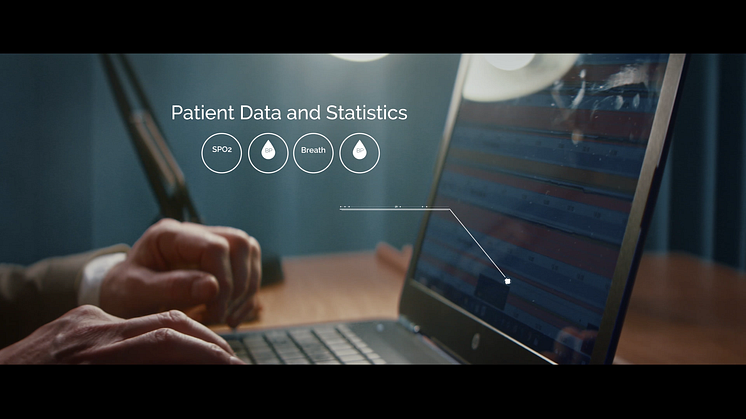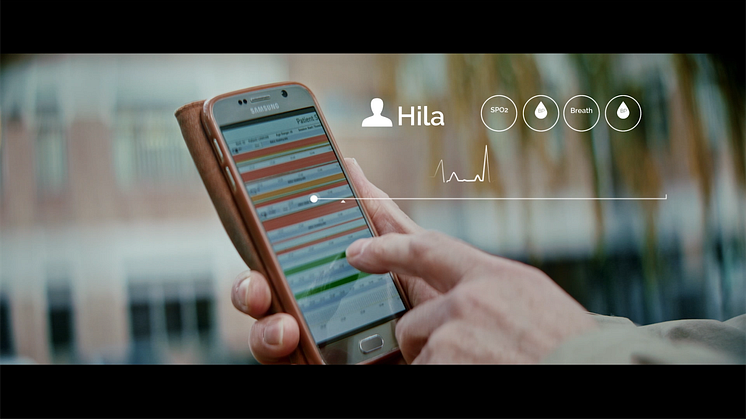
Blog post -
Blog: A new beginning - A thought piece from industry pioneers in wireless remote patient monitoring
The COVID-19 pandemic is an unprecedented public health crisis on a global scale. It is an unseen enemy that leaves serious illness, death and anxiety in its wake. Many people have lost their jobs, our economy is falling at a rapid rate, and those who find themselves isolated often feel a sense of hopelessness, facing an uncertain future. In Boris Johnson’s announcement this weekend he said we need to take careful measures to ease the lockdown to reopen society. He stated that “over the next two months we will be driven not by mere hope or economic necessity, we are going to be driven by the science, the data and public health.” We all know this means change and getting used to a new way of living.
Covid-19 has been a wake-up call for the nation and the world. A wake-up call that things need to change. Change, however, is the easy part, it’s the complete transformation that’s always the most difficult.
In healthcare we are already seeing big changes afoot. Although, historically, change and transformation has always been very slow as established methods - treatments, pathways and work flows - only give way to the new once the new methods have proven their safety, efficacy and efficiency, a process that typically can take many years and significant resource. Now, where there was once caution and inertia often attributed to regulation but more often the result of complex and lucrative business practices, healthcare stakeholders are, out of sheer necessity, implementing drastic measures in an effort to curb the spread of the virus, ease the burden on the healthcare system, and maximise capacity.
A good example is telehealth where applications have been showing great promise for many years, though adoption globally has been very slow. Now however, a recent survey https://www.sermo.com/telemedicine-explodes-in-these-uncertain-times/ of more than 1,300 physicians in the US showed that the more than 90% of them are treating some or all of their patients through telehealth and most plan to keep using telehealth to some extent after the pandemic ends.
Over the last two months we have seen thousand-bed hospitals built overnight, health strategies re-routed and governments and regulators lower the barriers for adoption and uptake of technology that will enable access to care despite social distancing.
At Isansys, we have seen a surge in orders for our patient monitoring technology, the Patient Status Engine (PSE), as hospitals deploy it to rapidly increase capacity and numbers of higher dependency beds, isolation wards and use it to provide high grade monitoring of patients at home or other locations outside the hospital itself. We are now working with partners and suppliers to enable us to scale quickly and are confident that we can meet the current demand.
Ten years ago, when Isansys was first set up by Keith Errey and his cofounder Rebecca Weir, driving innovation into healthcare wasn’t easy. Roadblocks were put up every step of the way. Many companies who had developed advanced healthcare technologies struggled to scale their innovations and get into clinical use. Healthcare providers were understandably cautious when it came to the adoption of the new technology; decision making was slow and opaque, budgets limited, and existing but inefficient methods were maintained as the process of change required too much effort and additional resource that was simply not available in many provider organisations.
All this has changed with COVID-19. The increased numbers of very ill and infectious patients together with measures on social distancing and self-isolation means healthcare providers have had to rapidly find new ways of working - for staff managing internal operations, for clinicians interacting with patients, for the patients themselves and their families Doctors are now connecting with their patients remotely; nurses are being trained on new equipment using on-line and virtual training tools; and moving care from hospitals to the community will increasingly become the norm over the coming months. This means that the many products and technologies that have been developed over the last decade to enhance the remote patient – physician relationship are now coming into their own. While some aspects of this relationship can remain entirely virtual, there are many that require some kind of physical manifestation, especially within clinical practice in the hospital. For hospital-at-home and other remotely delivered care, video consultation plus accurate and robust collection, transmission and interpretation of real-time physiological data, means there is no longer an absolute requirement for patients to physically present themselves at the clinic or doctor’s office, thus reducing risk, stress and time for both patient and physician.
These changes aren’t just for now. They will forever transform the way people seek and receive healthcare. However, not all the rapidly adopted processes and products will survive. Those that have been developed to solve ad-hoc and local issues and are poorly designed from a compliance point of view, will struggle. As the pandemic winds down, and more stringent regulatory requirements are once more imposed, the winners will not only be those organisations that understand the clinical and economic needs of their customers but also those who have invested the time and effort in establishing quality management systems and regulatory processes for the design, testing and validation of their products and services.
For Isansys, this transformation isn’t a surprise. We recognise that individuals themselves now want an enhanced patient experience, and physicians need higher quality data to provide a more proactive way to care for their patients through better diagnoses and earlier indications of improvement or deterioration in their patients’ conditions, preferably aided by machine learning or AI decision support tools. Over the 10 years of Isansys’ journey we have been building, testing, validating and deploying the technology and equipping doctors, nurses and provider organisations throughout the world with these advanced healthcare capabilities. We are now completely prepared for this new beginning.
It’s ironic that something good can come out of this current crisis but the truth is that process change and innovation in healthcare delivery is long overdue. A global pandemic and a vast human tragedy have set the wheels in motion and there’s no going back.
By Georgina Horton, Head of Customer Outreach at Isansys Lifecare


